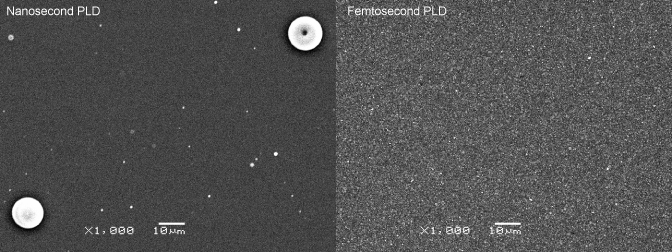
Comparison of FeSi2 film produced by nanosecond PLD (left) and FCPA femtosecond PLD (right)
The combination of high repetition rate, variable pulse energy, and ultrashort pulse width provides a unique opportunity for fine tuning the PLD process for superior film quality. One example of this is achieving droplet-free coating. Conventional nanosecond pulsed lasers often produce large liquid droplets in the ablation plasma, resulting in a nonuniform coating. The ultrashort pulse width of FCPA is ideal for cold ablation which generates plasma free of droplets, while the high pulse repetition rate assures deposition rate. The above figure is a comparison of morphology between nanosecond and FCPA PLD films.


